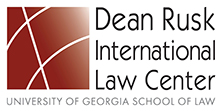Abstract
Underpinning a regulatory regime is a dichotomy between achieving certainty of outcome and achieving perceived fairness. While such a discussion may seem out of place in the context of a regulatory regime dealing with offshore offerings, it nonetheless serves to emphasize some of the considerations encountered in the following examination of Regulation S. Part Two of this thesis outlines the development of the disclosure regime that is evidenced in the United States Federal Securities Regulations and then goes on to examine how this regime, first established in the 1930s, dealt with the advent of globalization. Part Three then looks at Regulation S. introduced in 1990. An overview of the Regulation is provided, followed by a detailed examination of the various provisions of the Regulation. The thesis then moves on to Part Four which sets out some of the more common abuses that began to occur shortly after the introduction of Regulation S. and also notes some of the marketplace concerns regarding the operation of the Regulation. Part Five details the events, criticisms and SEC releases that led up to the amendment of Regulation S in 1998, before Part Six deals with the actual amendments themselves in some detail. As it has only been a relatively short time since the adoption of the amendments, Part Seven assesses the probable impacts which the amendments may have on both the abuses and the marketplace concerns. Following on from this, Part Eight provides recommendations should the abuses and concerns continue after the amendments. Part Nine calls into question the desirability of applying American securities laws extraterritorially and discusses various approaches to the international regulation of securities before the brief conclusion in Part Ten.
Repository Citation
LEE, CAROLINE MARY RUTHERFORD, "REGULATION S - RULES GOVERNING OFFERS AND SALES MADE OUTSIDE THE UNITED STATES WITHOUT REGISTRATION UNDER THE SECURITIES ACT OF 1933" (2001). LLM Theses and Essays. 266.
https://digitalcommons.law.uga.edu/stu_llm/266


